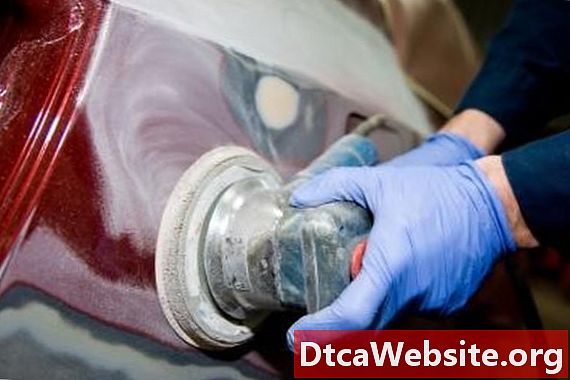
Contenu
Chevrolet big-block V8 engines were introduced in the late 1950s and have powered many medium-duty trucks and heavy car models ever since. The timing belts on these engines ensure that the truck runs smoothly, and since they stretch with age, they can start jumping gear teeth. Setting the timing when replacing a big-block engines aging timing belt requires interaction with the entire timing system.
Timing Components
The timing system in a big-block engine consists of a crankshaft connected by chain to a camshaft. The system controls the synchronized lifting, or opening, and closing of the various intake and exhaust valves along the distributor. The chain, also known as the timing belt, controls this synchronization between the crankshaft component and the fuel injection system via a system of gear pulleys. The timing system also includes two seals for the tensioner and crankshaft oil vessel. All of these parts are sized differently for certain models, and the most noticeable difference is the type and width of gear teeth present. The proper timing system components and settings must be used when working on your big-block Chevy engine, and the list of parts and settings can be found in the engines service manual (see Reference 2).
Setting the Distributor
The timing systems distributor sets a timing point regulated by two independent sources. The first is the engines initial timing, which must be set to idle per the service manuals specifications. Rotate the distributor clockwise to slow the timing and counterclockwise to advance it. The second timing method of the distributor comes from two mechanical sources: vacuum canisters and mechanical-advance weights. For the timing to be set correctly, the idle timing and the two components of the secondary timing must be synchronized properly (see Reference 1).
Adjusting the Vacuum Canister
Unlike the initial idle timing, the vacuum canisters regulate the part-throttle timing within the system. As the big-block engine accelerates, the force of the vacuum increases, causing the canister to pull a set amount of timing from the engine. Each engine upgrade or adjustment can affect the timing, and the vacuum canister must be adjusted to avoid destroying the timing system. Insert an Allen wrench into the vacuum canister itself to adjust the vacuum-advance springs to the proper levels as described in the engines service manual. For greater peace of mind, install a vacuum-timing limiter plate to preset the Chevy engines maximum vacuum timing (see Reference 1).
Calibrating the Weights
The other secondary timing element is a series of two weights attached to two springs with four pins. Upon acceleration, the big-block Chevy engines force pulls the weights from the timing plate. The force of the pull must be calibrated using both the springs tension and the timing slot. Use higher-load springs to increase the RPM of the engine, and use lower-load springs to achieve a lower RPM. To increase the engines timing speed, elongate the timing slot in this mechanism with a carbide cutter. If the timing needs to be slowed, weld the slot shut (see Reference 1).


